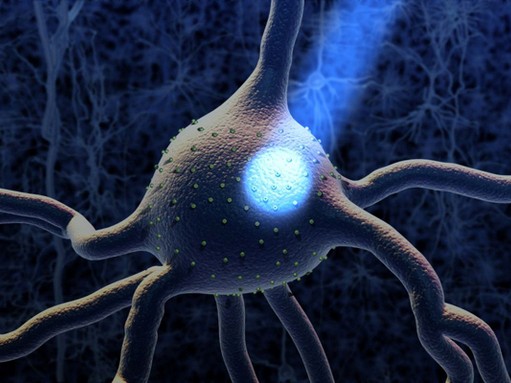
 A new study in neurology from McGill University finds that light therapy can be used as a non-invasive approach to chronic pain management.
A new study in neurology from McGill University finds that light therapy can be used as a non-invasive approach to chronic pain management.
Researchers were able to breed mice with light-sensitive neurons (called Nav 1.8+ nociceptors) in a region of the brain responsible for pain transmission. Once exposed to yellow light, these neurons ended up reducing their bioelectric activity, effectively shutting off the neuron and its pain-producing ability. What’s more, the researchers found that the pain-relieving effect of the light treatment persisted even after the light treatment was concluded.
“Our results show that acute blockade of Nav1.8+ terminals reduces pain transmission and that prolonged inhibition of peripheral input causes short-term analgesia outlasting the optical stimulation,” say the study’s authors, based at the Montreal Neurological Institute and Hospital of McGill University and the McGill University Health Centre.
Optogenetics, the use of light to produce desired effects within tissue cells, is an ever-expanding field, chiefly within neuroscience where it was first introduced in 2005. The process gives scientists the ability to control almost any type of neuron in the brain with pulses of light. And unlike other approaches for controlling brain activity such as the use of drugs or electrical charges, optogenetic manipulations can be incredibly precise both in terms of timing and types of cells affected. Thus, using optogenetics to control pain transmission would prove to be a much more targeted approach to chronic pain relief than the today’s most common method, the use of opiates, which cannot be localized with the same precision as a beam of light.
“Chronic pain is an increasingly big problem clinically and for many years we’ve relied only on opiates,” says Dr. Philippe Séguéla, senior author of the study. “It’s hard to treat because of tolerance, making it necessary to increase dosages, which leads to serious side effects. Optogenetic therapy could be a highly effective way to relieve chronic pain while avoiding the side effects of traditional pain medication.”
The treatment and management of chronic pain has become a major health concern. One in five Canadians suffers from chronic pain, which is associated with deteriorating quality of life, lower immune functioning and mental and social health issues.
It is estimated that chronic pain costs the Canadian health care system more than cancer, heart disease and HIV combined. The use of opioids to control pain has itself become a dire social problem, with pain medication related deaths currently on the rise. “Undermanaged chronic pain is an epidemic in Canada,” says Lynn Cooper, president of the Canadian Pain Coalition. “At its worst, this pain is disabling, dehumanizing, and deadly when people take their lives because they can no longer bear the pain.”
A recent study from the Massachusetts Institute of Technology showed that optogenetics could be used to control obsessive-compulsive behaviour in mice by working to turn off the hyperactive neurons that cause the compulsive behaviour, while another study from Tufts University found that optogenetic control of the bioelectrical signals between cells allowed for the prevention and regression of tumor cells in frogs.
The McGill University study was published in the journal ENeuro.
Comment
One thought on “Light therapy treatment for chronic pain becoming reality: Canadian study”
Leave a Reply
You must be logged in to post a comment.



 Share
Share Tweet
Tweet Share
Share




So what. The goal should be to prevent and cure pain- who cares about new treatments that dont do that.